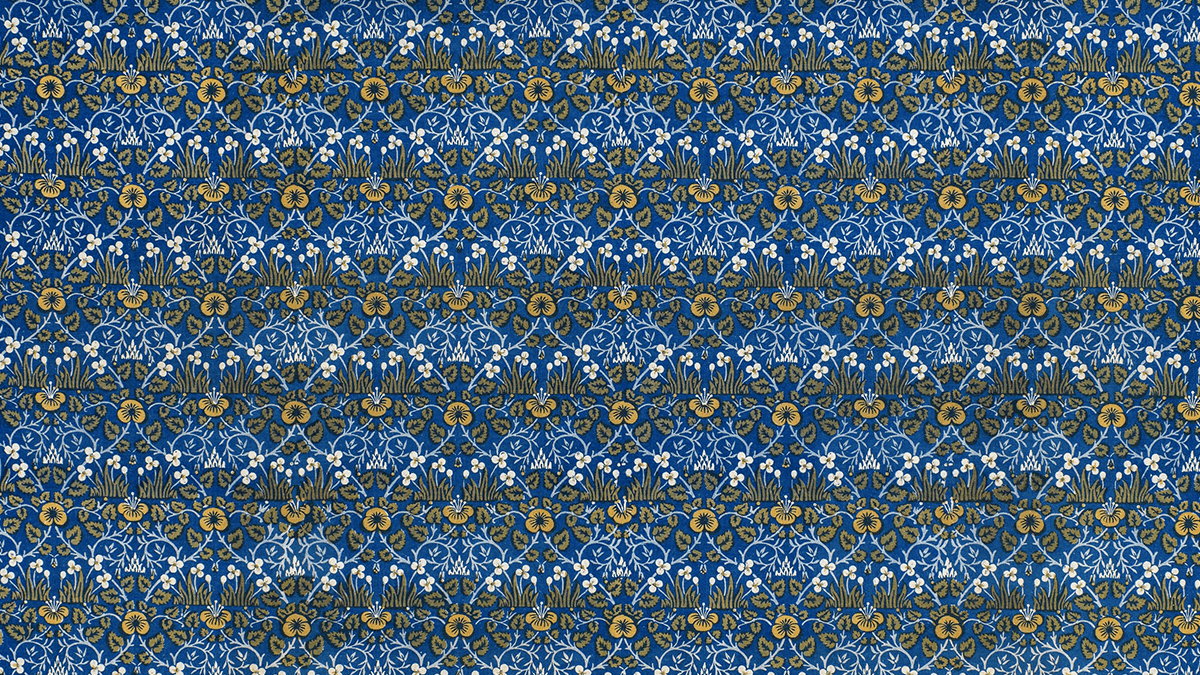By then, whilst the industrial revolution had made Britain very rich with its factories and production lines, some people didn’t like how plain things like houses had become, and how everything looked the same.
The Arts and Craft movement favoured quality over quantity and hand crafted items rather than mass produced, machine made goods, and sought to sought to replace the mundane machine with specialised craftsmen, hand painted ornamentation and human personality in design – essentially quality over quantity.
The resulting Victorian houses emphasised natural materials and recalled medieval cottages with sloping roofs, small windows and expansive gardens.

One of the founders of the movement was William Morris. He was very good at designing beautiful wallpaper, decorative glass and murals, many of which are still popular today. He once said that you should ‘Have nothing in your houses that you do not know to be useful or believe to be beautiful’.
Fun Facts about Arts and Crafts
- Many Arts and Crafts houses resembled medieval cottages, and were built with many features left exposed to explain its construction, so you’ll see lots of wooden pegs in beams, and bare stone and brick. However, whilst Arts and Crafts houses were supposed to be for ordinary people, they turned out to be quite expensive to make, so in the end only wealthy people could afford them
- Arts and Craft windows were designed to give the houses a cottage feel – so think bow windows and multi-paned windows. Stained glass was also very popular, because of its medieval feel.
- Wallpaper was the big trend in the Arts and Crafts movement. Many original paper was made with using vegetable dyes and wood blocks. William Morris designed many popular styles, often incorporating an upside down heart

Classic Arts and Crafts features
- The outside – key features are white, roughcast render, everything being exposed to explain the construction such as wooden pegs in beams, and bare stone and brick, pebble dash, stone dressed window and door openings, low rooflines.
- Walls – were often wood panelled, but painted in dark green colours. The overall colour combinations throughout the house would be in shades of cream, terracotta, mustard yellow, olive green, deep blue and crimson.
- Flooring – wooden, in either parquet – downstairs – or boards in oak both upstairs and downstairs – a dark stain is imperative to give them that rustic feel.
- Fireplace – had huge wide hearths set in an inglenook and the mantelpieces were often carved, sometimes with ornamental decoration about it. The tiles used were comparable to art nouveau ones but with stronger colours – blue, turquoise, red and green.
- Lighting – typically just plain wall sconces, without any type of embellishment. In the main, the household decoration was delicate and handmade, with very little ornamentation.
Let’s go looking for Arts and Craft houses!
- Arts and Craft houses often resembled medieval cottages, with sloping roofs, small windows and lovely gardens. The Arts and Craft movement was all about handmade work – furniture was often made from woods, especially oak, and loads of leather work was included in items such as chairs. They wanted to show how things could be crafted from the beauty of nature, which they believed was lost when machines were used.
- The best example of an Arts and Crafts house is William Morris’s Red House in Bexleyheath, with its pointed window arches, steep roofs and wooden fittings. It has a lovely garden which Morris said he wanted to feel like just another room of the house!
- Other great examples include the Horniman Museum in Forest Hill, the Fire Station in Euston Road, which almost looks like the corner of a very large country house.



